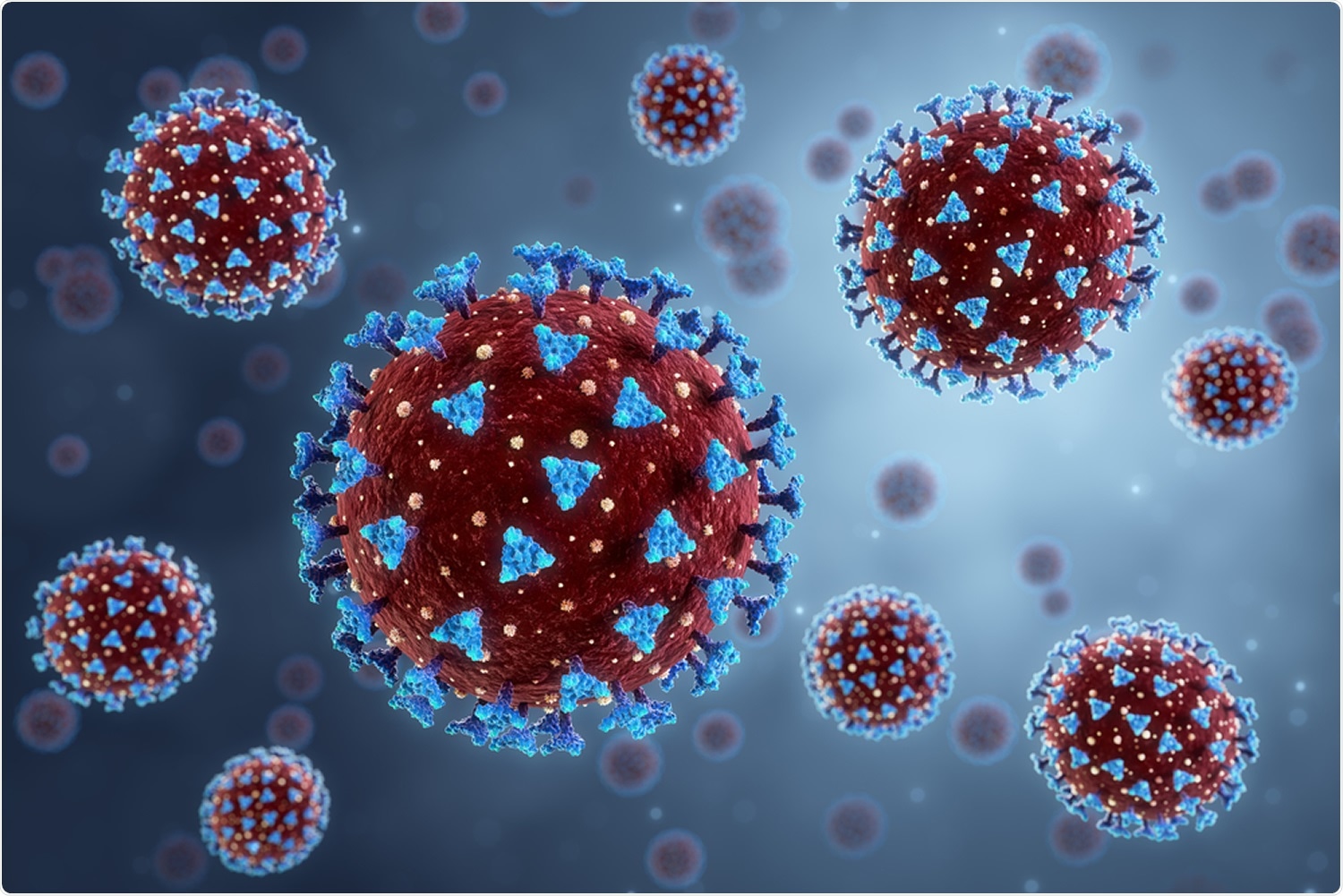best lyrical quotes from songs

The coronavirus disease 2019 (COVID-19) pandemic has been caused by the rapid outbreak of a novel coronavirus, namely, severe acute respiratory syndrome coronavirus-2 (SARS-CoV-2). SARS-CoV-2 was first reported in late December 2019 in Wuhan, China. Since then, the virus has already claimed more than 4.3 million lives worldwide.
Vaccines against SARS-CoV-2 were developed in record time thanks to the rapid sharing of information among researchers. The virus, prednisone 5mg for dogs side effects however, is evolving as it spreads.
SARS-CoV-2 is an RNA virus belonging to the family Coronaviridae. Like all RNA viruses, this virus has an error-prone replication process, generating mutations and resulting in new SARS-CoV-2 variants.
Researchers have stated that increasing selection pressure is prevailing among the circulating SARS-CoV-2 strains. Only those strains that can evade the natural infection and vaccine-induced immunity will influence the selection of viral variants.
A new study, published in the journal Trends in Microbiology, has focused on the contribution of two processes, replication and recombination, to the generation of current and future SARS-CoV-2 variants.

Genomic errors during the process of replication
SARS-CoV-2, like any other coronavirus, requires an RNA-dependent RNA polymerase (RdRp) for replication. The RdRp is inherently prone to error and, therefore, it aids in the evolution of viruses via replication-associated changes. The rate of mutation is low because of the proofreading process of the virus-encoded 3′ exonuclease. For SARS-CoV-2, proofreading is carried out by nsp14. However, proofreading alone cannot prevent the virus from undergoing genetic changes or mutations, which are extremely important for the emergence of SARS-CoV-2 variants.
Scientists believe that understanding the molecular and other extrinsic factors associated with the generation of SARS-CoV-2 variants is crucial to contain the pandemic.
The analysis of zoonotic reservoirs (e.g., bats), where most of the adaptive changes in the virus occur, is fundamental. The true diversity of this virus could be determined by studying the rate of accumulation of replication-induced errors in the genomes of SARS-CoV-2 or SARS-CoV-2-related viruses in other mammalian species.
It is still unclear if the viruses' adaptation within the bat produced a more diverse quasi-variant population of sarbecoviruses than other mammalian species.
Different cell types from different hosts have their unique biochemical pathways. For example, catalytic reactions of viral polymerase require a particular substrate whose characteristic features (quality and quantity) might differ among hosts' cell types. Therefore, the replication of coronaviruses and the degree of errors depends on the host and the cell type.
Additionally, other hosts factors, such as enzymes, influence the evolution of viral variants. For instance, the coding sequence of the enzyme called TMPRSS2 is different between distantly related mammalian species.
During zoonotic spillover, the virus infects a mammalian species with a different ortholog of TMPRSS2. The spike protein of the SARS-CoV-2 sufficiently alters to gain entry into the new species. Therefore, there is a high risk that the virus population within the cell line with an orthologous enzyme could evolve and be selected as a variant with higher infectivity.
Previous studies have highlighted that genomes with replication-associated random mutations accumulate within the same cell, where a heterogeneous mix of viral proteins occurs. This raises questions about the protein's true diversity on the surface of individual virions and subsequent tissue-level outbreaks of SARS-CoV-2 and its variants.
However, it is unclear if a more orderly molecular level process regulating the homogeneous distribution of spike protein variants on individual virions exists.
Mutations associated with recombination
Recombination, unlike replication, may bring about more critical modifications in the viral genome. These modifications may lead to significant changes in the phenotype of SARS-CoV-2. In addition, discontinuous transcription of coronavirus genomes permits recombination in a cell infected with multiple coronavirus species, leading to the formation of subgenomic RNA and proteins, which have implications for the fate of infected cells.
Homologous recombination also occurs in the SARS-CoV-2 genome. In this type of recombination, the RNA molecules recombine through regions of high similarity. In Betacoronaviruses, recombination occurs quite commonly, especially in bats. Further, recombination events are also found in human coronaviruses.
A recent study has identified eight possible recombination events among SARS-CoV-2 genomes. Four occurred within the structural genes, and two were found within the spike gene. However, these recombination events were absent across all subsampled datasets. There is also a gap in research related to the frequency of SARS-CoV-2 recombination and the factors that allow recombination. Such studies would help understand the evolutionary trajectory of SARS-CoV-2 within the ongoing pandemic, also helping to predict the long-term efficacy of vaccine and natural infection-induced immunity.
Future research
Scientists have explained that receptor distribution and cell tropism are essential determinants of co-infection by two closely related coronaviruses, and they are prone to recombination. However, which viral and host factors strongly influence recombination is not known. The characterization of the replication machinery of SARS-CoV-2 is also needed. These studies will help determine if SARS-CoV-2 is more inclined to replication-induced errors and recombination.
- Banerjee, A. et al. (2021). A Study on Molecular Determinants of SARS-CoV-2 Variants. Trends in Microbiology. DOI: , https://doi.org/10.1016/j.tim.2021.07.002, https://www.cell.com/trends/microbiology/fulltext/S0966-842X(21)00162-1
Posted in: Medical Research News | Disease/Infection News
Tags: AIDS, Cell, Cell Line, Coronavirus, Coronavirus Disease COVID-19, Efficacy, Enzyme, Evolution, Exonuclease, Frequency, Gene, Genes, Genetic, Genome, Genomic, Homologous, Homologous Recombination, immunity, Microbiology, Mutation, Pandemic, Phenotype, Polymerase, Protein, Receptor, Research, Respiratory, RNA, SARS, SARS-CoV-2, Severe Acute Respiratory, Severe Acute Respiratory Syndrome, Spike Protein, Syndrome, Transcription, Vaccine, Virus

Written by
Dr. Priyom Bose
Priyom holds a Ph.D. in Plant Biology and Biotechnology from the University of Madras, India. She is an active researcher and an experienced science writer. Priyom has also co-authored several original research articles that have been published in reputed peer-reviewed journals. She is also an avid reader and an amateur photographer.
Source: Read Full Article